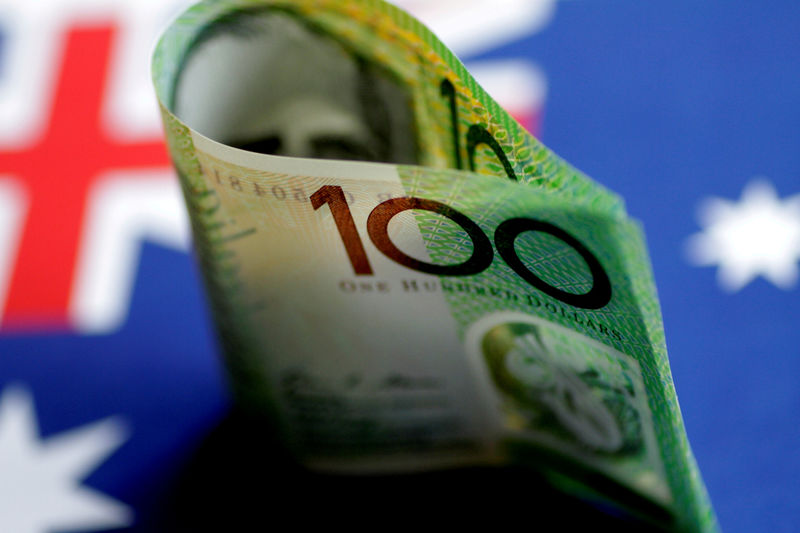By Wayne Cole
SYDNEY (Reuters) -Australia’s Labor government boasted the first budget surplus in 15 years on Tuesday, as strong jobs growth and bumper mining profits swelled its coffers, but it will quickly be swallowed up by spending on everything from health to energy and defence.
In his second budget since winning power in May last year, Treasurer Jim Chalmers also announced billions in cost-of-living relief aimed at lowering power bills and consumer prices in a helping hand to the Reserve Bank of Australia’s (RBA) fight against inflation.
“Providing responsible, targeted relief is the number one priority in our Budget,” Chalmers told lawmakers, while also lauding the improvement in the budget bottom line.
“This Budget, we’ve returned 82% of the extra revenue windfall that’s largely come from lower unemployment, stronger jobs and wages growth, and higher prices for key exports.”
The highlight was a projected A$4.2 billion ($2.85 billion)surplus for the year to June 2023, the first since 2007/08 and a huge turnaround from the A$37 billion shortfall forecast last October.
The former Liberal National government came tantalisingly close to a surplus in 2019, only for COVID-19 to blow a pandemic-sized hole in the accounts and lift the deficit to a record A$134 billion.
The latest improvement owes much to a surprisingly strong labour market, which has taken unemployment to near 50-year lows of 3.5% and boosted income tax while curbing welfare payments.
High prices for Australia’s commodity exports have also delivered a windfall to mining profits, and thus tax receipts, though prices are now well off their peaks.
The government also raised its long-term commodity price assumptions in the budget, which is expected to contribute billions of dollars in extra revenues.
“The government’s commitment to fiscal discipline, such as saving revenue upsides, remains critical to our ‘AAA’ rating on Australia as long-term challenges linger,” said Anthony Walker, a director at S&P Global (NYSE:) Ratings.
Walker believed the revised commodity price projections were still conservative.
“A sharp slowdown in economic activity that weakens the general government budget, causing debt and servicing costs to rise, could pressure the ‘AAA’ rating,” he added.
SPENDING PRESSURES
Chalmers also expects the domestic economy to brake to just 1.25% in 2023/24 from 3.25% this fiscal year, in large part due to a painful 375-basis-points of rate rises from the RBA.
That tightening should have the desired impact on inflation, which Chalmers sees slowing to 3.25% by mid-2024, down from the current blistering 7.0% pace. Treasury estimates its relief package for energy bills alone will cut 0.75 percentage points from consumer price inflation in 2023/24.
Higher interest rates, however, have sharply raised the cost of funding the government’s near A$1 trillion in debt, with debt repayments the fastest growing cost in the accounts.
The government also announced reforms to its immigration system to fill critical labour shortages, projecting that net overseas migration will reach 400,000 arrivals for the current fiscal year and 315,000 next year.
There are plenty of other demands on the public purse. Annual spending on hospitals and aged care is seen rising by 6% or more every year for the next decade, while interest payments are up almost 9% and disability payments 10%.
Australia will invest A$2 billion to scale up development of its renewable hydrogen industry, while defence is set for the biggest increase since World War Two amid plans to spend A$368 billion out to the 2050’s on nuclear powered submarines from the UK and United States.
All of which means the budget will soon be back in the red, with Chalmers forecasting deficits of A$14 billion in 2023/24 and A$35 billion the year after. As surpluses go, this is very much a one-off.
($1 = 1.4743 Australian dollars)
Read the full article here
